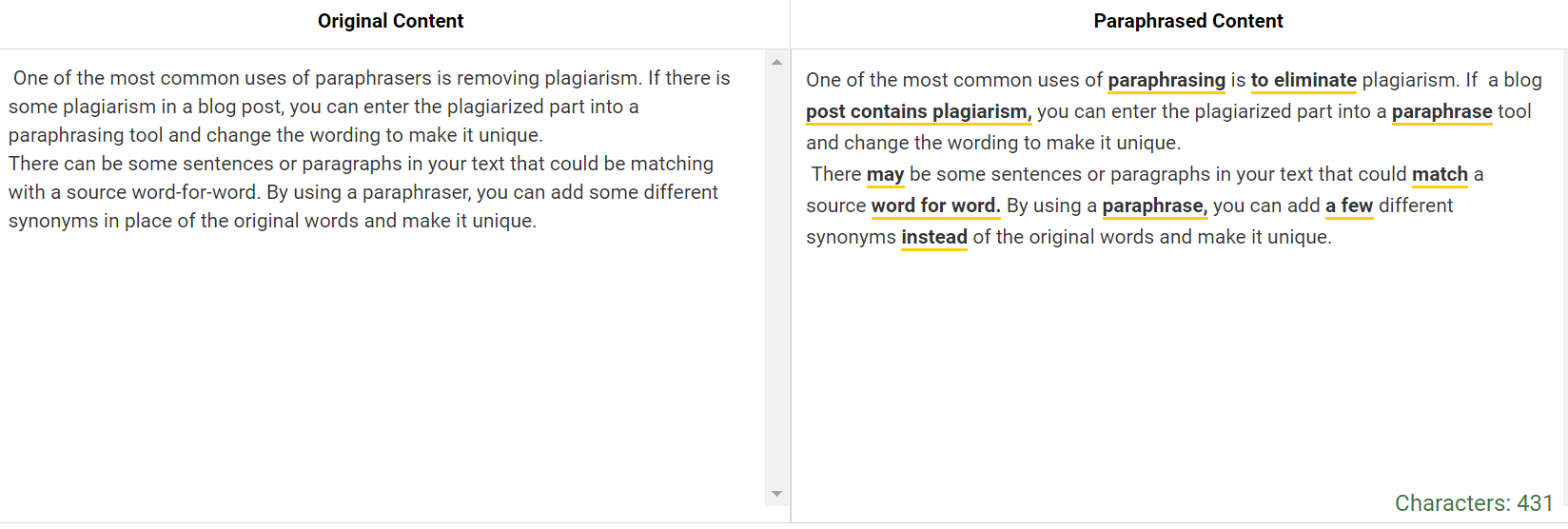How Paraphrasing Tools Help to Write Best SEO-Friendly Blog?
The paraphrase tool can assist you in creating SEO-friendly blog material. So check out a few ways in which using a paraphrasing tool can help make your content SEO-friendly.
Contrary to what a lot of people may think, paraphrasing is not some cheap and unreliable way of creating content. When done properly, it can be a great help to writers.
In this post, we are going to be over some ways in which using a paraphrasing tool can help make your content SEO-friendly.
Top Ways Paraphrasing Tools Can Help Write SEO-Friendly Blogs
1. Creating Readability

The first way in which paraphrasing tools can help make your blog posts more SEO-friendly is by improving readability.
For example, you may have written a particular post using very complicated words, and you may have made the sentence structures confusing and hard to follow.
In this sort of situation, you can use a paraphrasing tool to try and simplify your content a little.
The main functionality behind paraphrasing tools is to replace certain words in the entered text using suitable synonyms. By synonymizing the complicated words in your blog post, the paraphrasing tool will help you achieve better clarity and readability.
2. Fixing Spelling Mistakes

As we mentioned earlier, paraphrasers work on an algorithm that changes specific words in the text using suitable synonyms.
Since the synonyms used in place of the original words are computer-generated, there is no chance of them having any spelling mistakes in them.
Even if you were to add some words with spelling errors, the paraphrasing tool could replace them with correctly-spelled synonyms.
In some cases, the tool may even fix the spelling errors and do nothing else. Here, you can see this in this screenshot.
3. Removing Plagiarism

One of the most common uses of paraphrasers in removing plagiarism. If there is some redundancy in a blog post, you can use a paraphrasing tool to tweak the words to make them unique.
There can be some sentences or paragraphs in your text that could be matched with a source word-for-word. By using a paraphraser, you can add some different synonyms in place of the original words and make them look different.
Many paraphrasing tools online have different "modes". Each mode has a different working. In most tools, the classification of the modes consists of a standard and a fluent mode. Some tools can consist of more modes as well.
The point of mentioning the above is that if you are looking to remove plagiarism from your write-up, make sure to use a mode that makes sufficient changes. Otherwise, plagiarism may remain.
4. Improving Vocabulary
Another way in which paraphrasing tools can help you create SEO-friendly blog posts is by improving your vocabulary.
Because paraphrase tools function by substituting synonyms for specific terms in your text, you can take advantage of this to expand your vocabulary. That way, you can use new words every time you write a blog post. This can make your content stand out, and look refined.
You can do this even if you don’t want to paraphrase some content. In other words, you can take random paragraphs from the internet, and paraphrase them to learn new words and synonyms.
Few Tips for Paraphrasing Blog Content
As much as we appreciate the benefits of paraphrasing tools, it has to be remembered that, in the end, they are just automated algorithms. They can make mistakes too, and oftentimes, the paraphrased result can be vastly different from the expectations.
Tip # 1: Pick a Good Tool

This is the first and foremost point that you should keep in mind if you want to paraphrase some content.
Always take care to pick a reliable paraphraser to paraphrase online. There are many paraphrasing tools available online that randomly change the words in the original text with synonyms without caring about how close they are to the context.
For example, a poor tool would change the words “He gave them the building pass…” to “He gave them the construction proceed…”.
'Construction' is technically a synonym for 'building,' but only for the verb form, not the noun. Similarly, 'progress' is a synonym for 'pass,' but it refers to the verb rather than the noun. These sorts of finer details are maintained by intelligent paraphrasing tools.
Tip # 2: Check and Recheck

Oftentimes, the paraphrased content can have some contextual mistakes in it. The synonyms used can be different from the intent of the overall text. Here’s an example:
The paraphraser tool changed ‘in a bit to fetch the fruit’ to ‘to bear fruit’…which does not make sense.
For these types of issues, it is highly recommended to check and recheck the paraphrased text. If any added words don't match the context, you can change them with suitable synonyms.
Tip # 3: Paraphrase in Chunks
This is another useful tip that you can try to get accurate and logical results from your paraphraser.
If your content has different sections, and each of them features different types of content, there is a chance that the tool (even if clever) will become confused.
It may start to use out-of-place synonyms that may not fit well with the context.
To avoid this, you should break your content into parts. You should make sections of the parts where similar types of things are being discussed. That way, you will be able to increase the chances of getting minimal context-related mistakes.
Conclusion
Paraphrasers have a lot of negative connotations these days because they are utilized as a quick method of 'generating' material by students and authors.
But there are many other clean and legitimate uses for paraphrasing tools as well. That was pretty much what this post was about.
Paraphrasing tools can help you create SEO-friendly blog posts by increasing readability, removing plagiarism, fixing spelling errors, and diversifying your choice of vocabulary.
However, to get the most out of these tools, you have to follow certain steps. We discussed those in the ‘tips’ part at the end of the post.

Subscribe & get all related Blog notification.





Post your comment